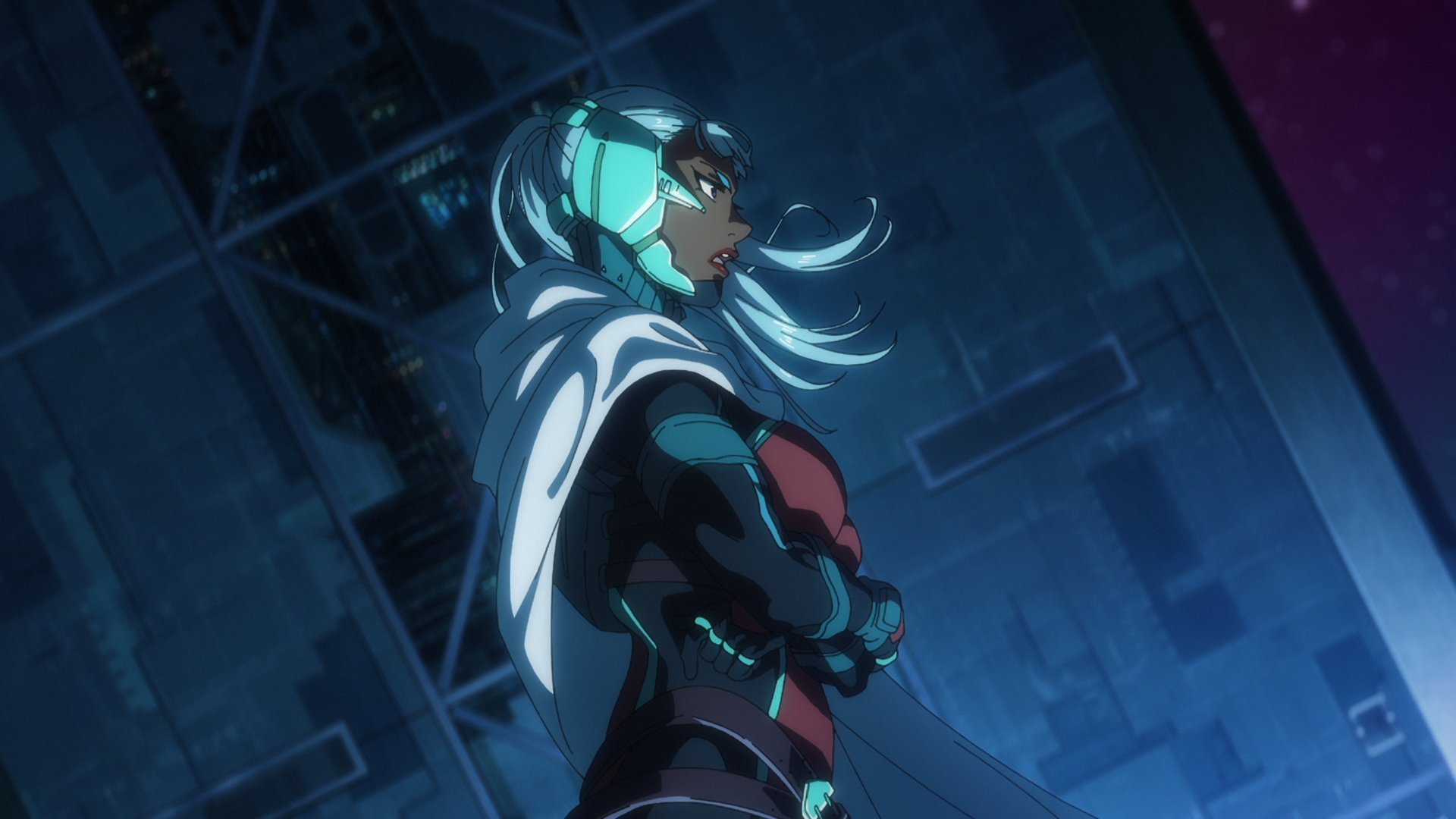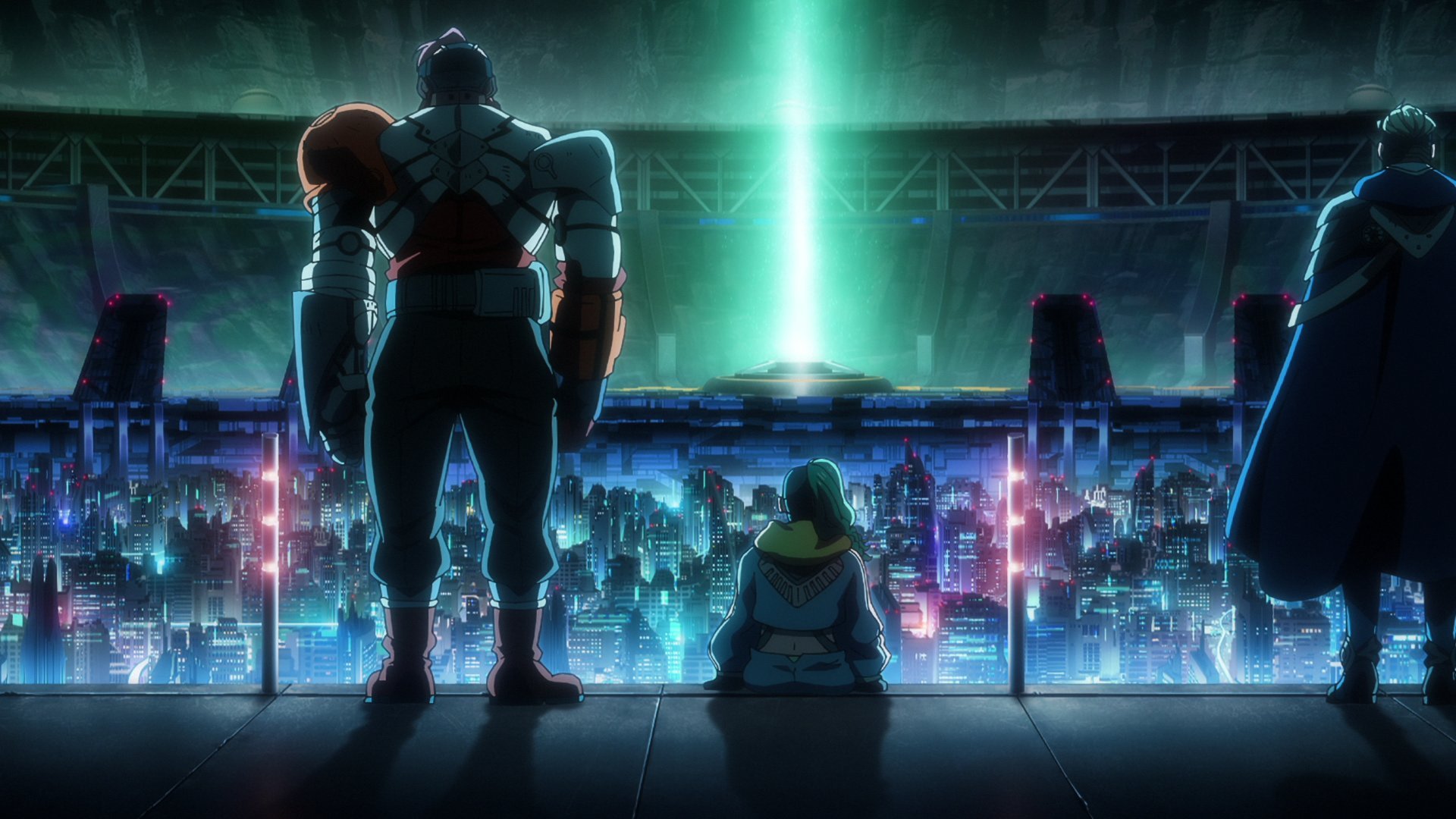On paper, Netflix’s new sci-fi anime, Moonrise, is anime catnip to old and new generations of anime fans as a dream collaboration too significant to fail, even if the platform faltered in promoting it before its release. Directed by Masashi Koizuka of Wit Studio (Attack on Titan), featuring character designs by Hiromu Arakawa of Fullmetal Alchemist fame, and scripted by Tow Ubukata (Fafner in the Azure), the series promised a space opera evoking the essence of Star Wars and Space Battleship Yamato. This impressive combination of talent elevated Moonrise to must-watch status before a single frame was seen. However, the narrative struggles to maintain a consistent harmony with the anime’s otherwise stunning sci-fi action sequences and sharp animation, resulting in an uneven viewing experience under Netflix’s instant-gratification binge-watch model.
Moonrise is set in a near future where humanity flourishes in a seemingly idyllic utopia, free from racial discrimination, war, pollution, and prejudice—thanks to Sapientia. This global AI network, trusted wholeheartedly by humanity and followed without question, meticulously oversees global politics. One of Sapientia’s far-reaching initiatives sees Earth offload its challenges of yesteryear through a lunar development project, where criminals and pollutants are sequestered on the moon.
This ignites a civil war among three factions: a rebel army on the moon, lunar “Sapientian” loyalists, and Earth’s joint military force. At the heart of this space conflict is Jack Shadow, who, driven by the loss of his family in a terrorist attack, joins a covert scout unit tasked with neutralizing rebel leader Bob Skylum, known as “the king of the moon.” However, his mission turns unexpectedly when he discovers that a childhood friend is fighting on the opposing side.
From the jump, Moonrise embodies the grandeur of a high-budget Hollywood space opera, perfectly matching the prestige of its dream team of creators. Towering CG space freighters boast intricate architectural designs meticulously crafted from stern to bow. The fight choreography is immaculately drawn, as heroes and villains glide across the screen in fluid, weightless movements—evoking the Survey Corps’ acrobatic 3D maneuver gear from Attack on Titan fused with the gravity-defying double jumps of Destiny 2‘s guardians.
Blending its weighty and uncannily relevant political themes—mirroring the socio-political climate of 2025, where disenfranchised rebels criticize Sapientians for their economic privilege to afford eggs, now a rare luxury—the show introduces a distinctive form of space magic known as “engrave.” This ability allows its heroes to transform special matter, crafted by Sapientia, into energy-based weapons like blades, guns, and ammunition. While Moonrise takes a loose approach to defining the limits of engrave, likening it to the alchemy of FMA or the power of Green Lantern rings, that doesn’t hamper the anime’s undeniable cool factor.
Another small but not insignificant quality that makes Moonrise stand out: Arakawa’s comfy character designs. While much of the aesthetics of its main characters, like Jack and Phil, look like sci-fi versions of FMA‘s titular alchemists, Arakawa’s designs also enrich the anime with diverse body types and ethnicities. It is refreshing to see a space-faring anime go to the lengths to make its cast feel like a reflection of the real world. All of the above are glistening tools that would otherwise lead to Moonrise being a classic in the making, had its narrative not struggled to stay in orbit with its brilliance.
By the midpoint of Moonrise, its once-absorbing themes and gripping narrative begin to dissolve, like a vibrant sticker in a car’s rearview mirror—its colors fading until only a shadow of its former self lingers as the story trudges forward. Much of this stems from the show’s peculiar storytelling approach. While its early episodes are packed with political jargon, shifting allegiances, and name-dropped space territories—elements that usually signal a fully realized sci-fi world—the anime squanders this foundation with its erratic time handling, ultimately undermining its depth.
Instead of feeling like you’re piecing together its plot alongside its characters, Moonrise leaves viewers in the dark until characters casually mention that years have passed between scenes that otherwise felt like they occurred moments after each other. This turns Moonrise into a frustrating experience, leaving viewers grasping for clarity as they struggle to decipher the true motives of its key players beyond the basic notion of opposing factions. The show obscures character dynamics, making it difficult to pin down where alliances genuinely lie.
Despite its ambitious attempt to weave numerous moving parts into an 18-episode run—longer than the typical 12-episode anime season—Moonrise struggles to maintain narrative cohesion. Instead of feeling like a fully realized story, its plotting resembles the rushed finale of a multi-season show or a compilation film that glosses over heartfelt character moments, reducing its depth to broad strokes. As a result, despite its extended runtime, the anime feels like it sacrificed crucial content that could have smoothed out its abrupt character developments, leaving viewers with the sense that too many significant details and explanations are missing.
Another casualty of Moonrise‘s bizarrely paced narrative is its wonderfully designed characters; the takeaway feels like you’ve given a kid a 128-color crayon box and then witnessed them favor a handful of colors, leaving the rest unused. Outside of the anime’s four leads, the supporting cast is visually striking but ultimately hollow, serving archetypal roles rather than contributing anything truly meaningful to the story. The only glimpse of meaningful characterization for Moonrise’s supporting cast lies in its ending theme—ironically bypassed by Netflix’s autoplay. In those brief moments, viewers get a clearer sense of their dynamics and personalities than the actual show ever provides.
Viewers are left adrift, subjected to characters who petulantly withhold explanations from both their opposition and the audience—even as they themselves appear perplexed in the show’s penultimate episode. While Moonrise does attempt to unravel some of its not-so-high-concept mysteries, it does so through lifeless exposition dumps that sap any remaining intrigue. Eventually, you stop leaning in with each revelation, letting them passively wash over you until the show finally hands you an answer—one you were never given the chance to decipher on your own. Even more frustratingly, the show loses its grip on political intrigue and the tension surrounding the political upheaval among the factions. The sharp psychological edge of the political conflict is blunted by the abrupt introduction of a fourth entity, which drains the momentum from its human drama.
Ultimately, Moonrise crashes and burns, weaving loose plot threads, themes, and action into a cohesive conclusion. Its finale largely avoids the political intricacies it initially set up. The result is a lackluster and unsatisfying payoff to the promising groundwork of its first half. While the anime’s action hints at the potential for a sci-fi classic, its undercooked narrative and feeble ending reduce its political commentary to Netflix’s “We’ve got Mobile Suit Gundam at home.”
All 18 episodes of Moonrise are streaming on Netflix.
Want more io9 news? Check out when to expect the latest Marvel, Star Wars, and Star Trek releases, what’s next for the DC Universe on film and TV, and everything you need to know about the future of Doctor Who.
Read the full article here















